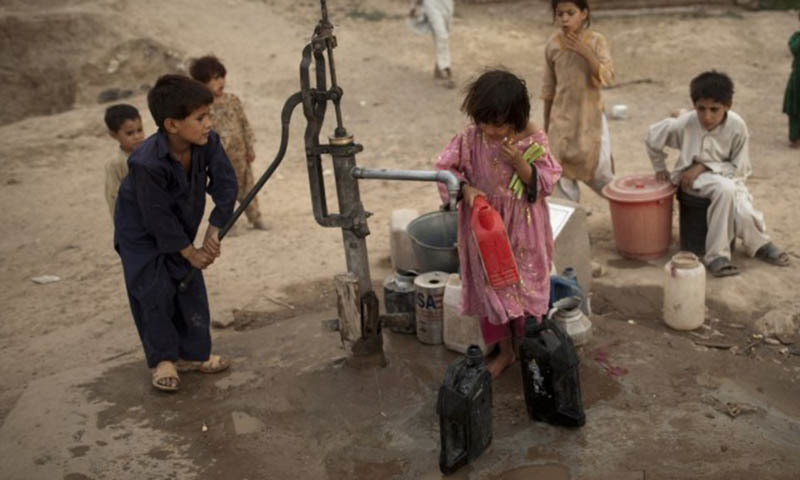STRUCTURAL transformation is central to how countries prosper. The movement of jobs from agriculture to manufacturing and service industries is the first stage of that transformation. Then, within industries, a process of creative destruction helps weed out unproductive firms and gives rise to more efficient and innovative ones.
Of course, no two countries have the same growth path. But those that succeed at sustaining growth do so by moving resources to more productive areas and building firm capabilities. Pakistan’s economy is shifting towards more highly skilled, modern and productive industries but the path is uneven and slow relative to global norms. The economy is less agricultural, more urban and services-oriented than before. Traditional industrial clusters have started exporting new products, while new industries such as information, communications and technology (ICT) are emerging. Relative to the historical norm for countries at similar levels of per capita GDP, while Pakistan’s agricultural sector is of typical size, its manufacturing sector is small, and the services sector large.
There are signs of a slowdown in industrialisation and concerns around the quality of job creation given the predominance of small, low-productivity firms. Also, change has progressed unequally for women and men: in fact, the labour force exit from agriculture has been driven by men alone.
The slowdown in industrialisation is worrying because manufacturing – and export-oriented manufacturing in particular – has historically been a ladder for better jobs. It is possible that recent global trends such as automation, the geographic concentration of global value chains and the rising importance of skill-intensive services as inputs into manufacturing have made this ladder less reachable for developing countries.
In a new report, the World Bank takes a deep look at what Pakistan needs to do to have a better future for its people by 2047, a full century after the country’s birth. In this series, the authors provide a brief summary of key recommendations of the report.
Even so, there are opportunities in many industries because of the large size of the market. Domestic firms could start by concentrating on low-cost varieties that cater to local tastes, where they have a comparative advantage. For example, Shanghai Jahwa, China’s oldest cosmetics company, first thrived by developing low-cost products catering to local tastes. Such gradation and market segmentation already exists in Pakistan. Consider the garments sector, where a small number of larger exporters use technologies close to the frontier and compete globally for the business of major brands, while numerous small to medium-sized firms use less advanced technologies to serve the local market.
On the other hand, in the services sector, technology has expanded opportunities for productivity growth available to developing economies. Pakistan is already developing a niche in the ICT sector as the country ranks in the top 10-25 per cent on Upwork’s listing of growth rates for top-earning countries, alongside India, Canada and Ukraine. Skill development remains a major constraint, but a large middle class educated in Pakistan’s top universities can provide a critical mass to kickstart development of the ICT sector.
There are many other pockets of excellence. The Sialkot leather goods cluster is perhaps the best known of them. A world leader in the production of hand-stitched soccer balls, it competes successfully against machine-made manufacturers. The cluster, has, in recent years entered new fields such as surgical instruments. Other similar successful clusters are found in sectors such as electrical fans, garments and textiles.
But an average Pakistani firm lacks the capabilities to take advantage of these opportunities. It is poorly managed and not innovative. It does not grow: the average young firm (less than five years old) has just one employee, and the average 15-year-old firm still has just two to three employees. This could be due to market failures that impede innovation, the acquisition of skills and access to credit. Another underlying issue is the misallocation of resources, with factors such as political connectedness sometimes mattering more than productivity in determining firms’ access to resources.
Addressing market failures that impede technology upgrade and innovation is therefore important. Leaving aside some of the more advanced manufacturing clusters, most firms in Pakistan just need workers with strong foundational skills and support for upgrading basic managerial practices, machinery and processes. Later, more research and development-heavy, technology-oriented support programmes could be introduced to the more advanced firms.
Tackling market distortions and fragmentation is equally important. For example, many unnecessarily burdensome business regulations remain despite reforms. The layers of regulations at the federal, provincial, local and sector levels should be reassessed and digital technologies deployed for more effective, consistent enforcement.
In agricultural policy, reforms are pivotal to removing excessive controls. In trade policy, high import duties on intermediate goods tax firms that rely on high-quality imported inputs, such as exporters, while discretionary special exemptions disproportionately benefit larger firms. A simple, transparent tariff structure, with reduced tariffs and fewer discretionary provisions is needed.
As in other countries, undue influence from narrow interest groups and short-termism has undermined reform attempts in Pakistan. Strengthening institutions and building capacity for independent policy analysis and oversight is critical. Young, dynamic firms will welcome reforms for growth and innovation, but they often have a weak voice in the policy arena. Learning from the global experience, Pakistan should formalise mechanisms that facilitate regular feedback and advocacy from a broad set of firms and consumers to help ensure that business climate policy is sensible and responsive.
The author is a World Bank staff member.
Published in Dawn, March 21st, 2019














































